AI in Insurance
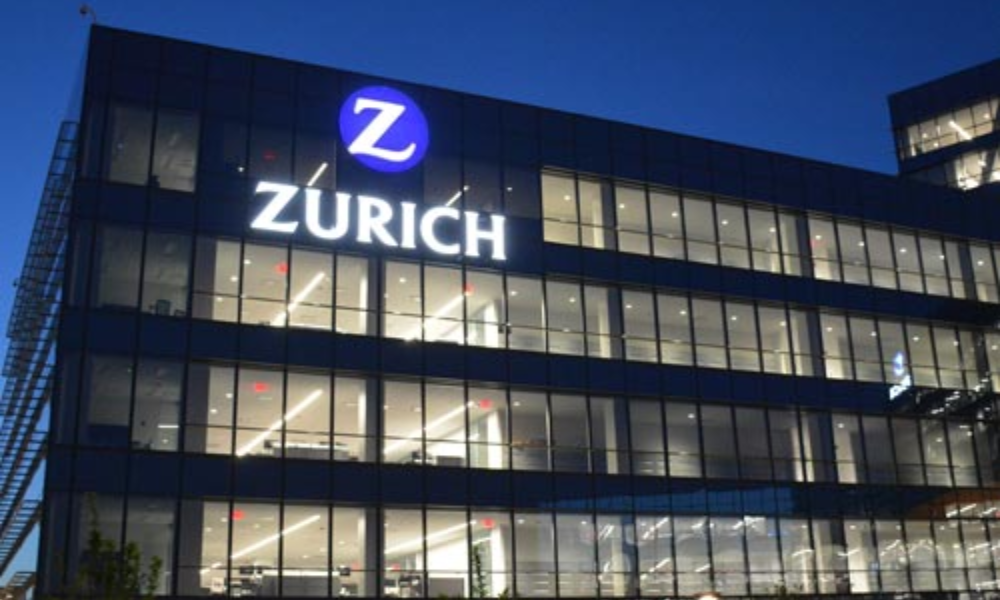
Zurich backs next wave of insurtech talent in global innovation drive
Zurich Insurance Group recently hosted its first Innovation Festival, bringing together startups, AI specialists, investors and customers to explore how technology is transforming insurance.
At the event, Zurich named 10 winners of the Zurich Innovation Championship 2025, its global competition to find technology solutions that address insurance challenges and improve customer outcomes. The competition is now in its sixth year.
Two winners were chosen from 25 pilot projects launched this year. Nexoya was recognised for using AI analytics to optimize marketing budgets, while Optimizely Opal was commended for enabling personalized digital experiences through its agent orchestration platform.
Five other winners came from Zurich’s Agentic AI Hyper Challenge, a large-scale hackathon that drew more than 1,000 participants from 40 countries. Their projects focused on automating and improving key insurance processes. AgentricAI’s Clara streamlines travel claims processing; Interloom enhances internal knowledge sharing; Wangari Global’s Etio automates IFRS 17 reporting; WordLift improves Zurich’s online visibility; and ZuriFault, developed in-house, accelerates motor liability decisions.

Shadow AI Is a Growing Problem | Insurance Thought Leadership
Artificial intelligence (AI) has quickly become the productivity tool employees can't live without. From drafting emails to analyzing documents to using AI coding assistants, workers are bringing AI into their daily workflows.
There is a growing problem, however. Most companies struggle to understand and address the associated security risks of an expanding ecosystem of AI tools, so they outright ban most (if not all) tools and only approve use of a few (if any) that they deem secure and compliant. Unfortunately, not all employees adhere to their company's policies, with many opting to use tools that are unapproved and unsanctioned – referred to as "shadow AI."
Similar to shadow IT, shadow AI is when employees use external AI tools – generative AI, coding assistants, or analytics tools, for example – of which the IT team has no knowledge or oversight. Shadow AI is far riskier than shadow IT, because tools like ChatGPT and Claude, and open-source large language models (LLMs) like Llama, are easily accessible, easy to use, and not easily visible. This creates an unseen, rapidly expanding risk surface that only expands as unapproved AI usage grows.
Recent research underscores the dangers of shadow AI: 84% of AI tools have already experienced data breaches, and over half (51%) of tools have been the victims of credential theft. Additionally, a late 2024 survey of 7,000 employed workers by CybSafe and the National Cybersecurity Alliance (NCA) shows that about 38% of employees share confidential data with AI platforms without approval.
Imagine that each unsanctioned query or prompt gives rise to the potential to leak sensitive corporate data to malicious or unauthorized users, and you can understand how severe the risks of shadow AI are.
Ravi Srivatsav is chief executive officer and co-founder of DataKrypto
Commentary/Opinion

Getting insurance-to-value right in 2025
Insurance is not set-it-and-forget-it in a world where the value of replacing property and possesions keeps going up.
When it comes to commercial real estate, nothing has been constant or predictable since the pandemic. The costs of materials, labor and code-driven rebuilding have been uneven since 2020. But many insureds still apply carry-forward trend factors to last year's numbers.
In today's property market, taking valuation shortcuts puts you at risk of underinsurance, coinsurance penalties and contentious claims. But having an independent appraisal of your property gives you a more disciplined approach that aligns your schedules with actual reconstruction costs and asset mix. Brokers can take the lead by helping clients scope, commission and maintain defensible values that the market will underwrite.
Rolled-forward values are easy to place until a loss exposes the gap. That’s where an independent property appraisal comes in. Here are three of the most important advantages of having an independent property appraisal:
Clear definition of value. Commercial property programs typically insure on replacement cost or actual cash value, and unique facilities may require reproduction cost. Asset-level accuracy. Buildings, site improvements and movable equipment do not inflate at the same rate. An appraisal classifies assets, captures additions and disposals, and corrects legacy errors in fixed-asset reporting. Appraisals provide the granularity that underwriters need for rating and catastrophe modeling.MORE
Brian Johnston and Anthony Venette
News
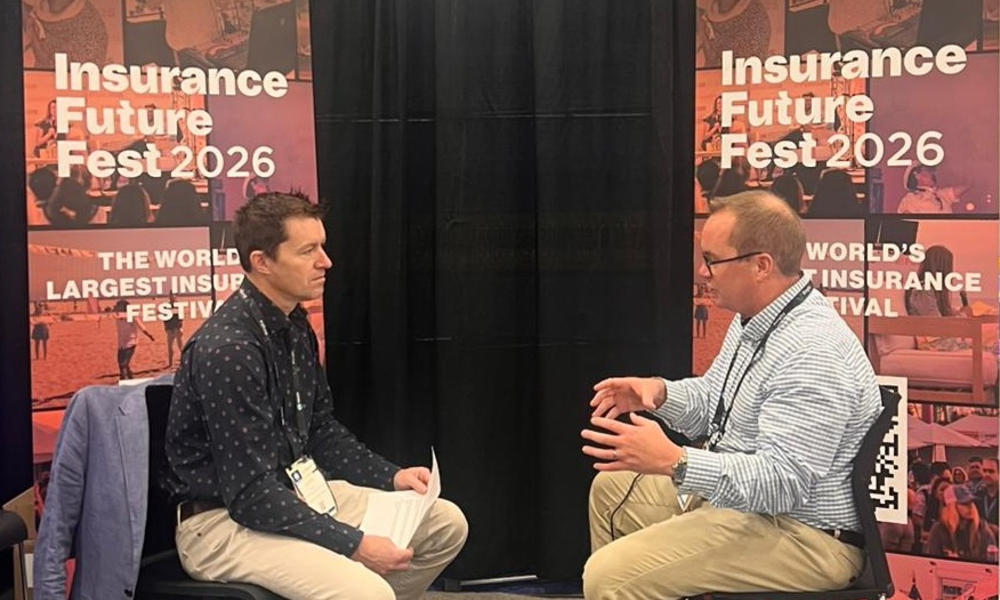
ITC Vegas 2025: Insurtech's 'Big Bang' moment
With over 9,000 insurance professionals and 762 sponsors descending on Las Vegas for InsureTech Connect (ITC) 2025 last week, transforming Mandalay Bay into the beating heart of global insurance innovation. ITC Vegas again lived up to its reputation as “the epicenter of insurance innovation,” delivering three days of high-energy debate, deal-making, and discovery.
From climate risk to cyber resilience, artificial intelligence to modular system design, this year’s conversations reflected an industry accelerating toward digital maturity – but still grappling with legacy constraints.
Insurance Business Magazine spoke with many in attendance including Jason Kaminsky, CEO of kWh Analytics, who said "the palpable buzz was unmistakable: The energy is good. A lot of interesting conversations, fascinating vendors out there. Every year the space evolves by leaps and bounds – it’ll be interesting to see what happens next year.”
That evolution was visible across ITC’s 14 content stages and 100+ immersive experiences, where executives, founders, and investors explored how technology is transforming risk quantification, underwriting precision, and the customer experience.
Hardeep Gulati, CEO of Duck Creek Technologies, captured what ITC has come to represent for the sector: “It’s the best way to meet all the customers and partners. This conference is the cornerstone of the vibrancy of insurtech. You can just feel the energy here – it’s exciting to be a part of.”
Research
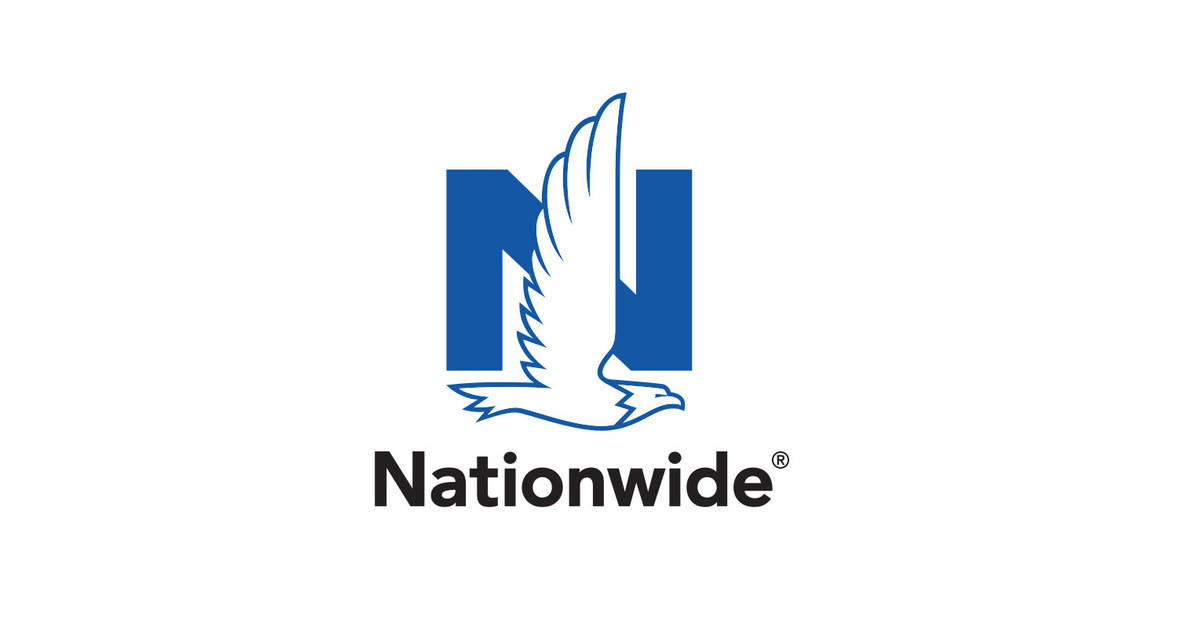
Millennial Investors Feel Forced to Choose Between Retirement and Homeownership
Millennials are facing an unprecedented financial squeeze: a staggering 58% feel like they have to choose between homeownership and retirement security, according to a new Advisor Authority study, powered by the Nationwide Retirement Institute. As housing prices accelerate ahead of median income wage growth, Millennials face a fundamentally different financial environment than their parents did – resulting in different approaches to wealth building.
Whereas previous generations used homeownership as a tool to build wealth, many Millennials (investors ages 29-44) are struggling to afford housing and view it as a challenge to their retirement savings plan. That struggle is causing a negative view of retirement attainability in general – more than a third (35%) of Millennials cite rising housing costs as the biggest obstacle to their retirement readiness, and 46% believe mortgage or home equity loans pose the biggest threat to achieving a secure retirement.
The impact of the housing dilemma is immediate and measurable: 60% of Millennials have adjusted their retirement plans at least some since the start of 2025 in response to rising housing costs. This housing-retirement tension represents a fundamental departure from traditional wealth-building strategies, forcing Millennials to reimagine how they'll achieve financial security in retirement without relying on real estate appreciation. CONTINUES
Telematics, Driving & Insurance

Tesla Full Self-Driving gets an offer to be insured for 'almost free'
Tesla Full Self-Driving just got an insurance offer from Lemonade Co-founder and President Shai Wininger that might be too good to pass up, as he wants to insure vehicles on FSD for “almost free.”
Traditionally, Tesla vehicles are slightly more expensive to insure with traditional companies because of higher repair costs that stem from their technology and state-of-the-art structural battery design.
However, the development of the Full Self-Driving suite by Tesla has certainly pulled some tech entrepreneurs and others to believe the vehicles should be much cheaper to insure.
While there are certainly people on both sides of the spectrum, a handful of notable tech figures believe the data shows that Teslas operating on FSD are safer than human drivers.
One of the tech figures who believes that is Shai Wininger, President and Co-founder of Lemonade, an insurance company that has nearly two million customers.
On X, Wininger recently announced the direct integration with Tesla vehicles that would roll out to Lemonade customers. The integration would “remove the need for a UBI device in our Pay Per Mile product. This makes activating Lemonade Car on Teslas effortless and lets us cut hardware and shipping costs, helping lower prices for Tesla drivers even further.”
He said the Tesla API complemented Lemonade’s platform because it provides “richer and more accurate driving behavior data than traditional UBI devices.”
He then proposed an idea to CEO Elon Musk, stating that Lemonade would “be happy to explore insuring Tesla FSD miles for (almost) free.”
InsurTech/M&A/Finance💰/Collaboration

Brokerage M&As decline in third quarter
There were 188 mergers and acquisitions among U.S. and Canadian insurance intermediaries in the third quarter, down 13% from the same period last year, according to a report from Optis Partners.
Although the number of deals was up 5% compared with the second quarter, the total for the first nine months of 2025 was 520, down 7% compared with the same period last year.
“Looking ahead to the fourth quarter, we expect activity to be equal to or slightly below Q4 2024, thus continuing the trend of the last three years,” said Steve Germundson, a partner at Optis, a Chicago-based investment banking and financial consulting firm.
Optis tracks M&A among agents, brokers, life and financial services consultants, third-party administrators and other insurance intermediaries.
Broadstreet Partners was the most acquisitive brokerage in the first nine months with 57 deals, down 21% compared with the prior year period, followed by Hub International with 38, down 12%.
Private equity-backed brokerages continued to dominate the M&A sector, accounting for 72% of all deals so far this year, according to the report.
US cemented its place as the leader in the InsurTech market with over half of all deals in Q3
Key Global InsurTech investment stats in Q3 2025:
- Global InsurTech deal activity grew by 19% QoQ in Q3
- US companies secured over half of all deals to cement their position as global InsurTech leaders in the second quarter of the year
- INSHUR, a global InsurTech platform that provides AI-driven commercial insurance solutions for the on-demand mobility sector, secured one of the biggest InsurTech deals of the quarter with a $35m funding round from Trinity Capital In Q3 2025, the global InsurTech industry saw deal activity remain stable but continued to experience subdued funding levels compared to the previous year.
The sector raised $752.5m across 75 deals, representing a 68% decline in funding from the $2.4bn recorded in Q3 2024.
However, it is important to note that Q3 2024’s total included the $1bn Sedgwick deal, which significantly inflated the figure.
Excluding this transaction, funding in Q3 2024 would have stood at $1.4bn, meaning Q3 2025 funding actually represents a 46% decline year-on-year.
Deal activity, meanwhile, saw a 3% increase, rising from 73 to 75 transactions.
Despite a challenging funding environment, the US expanded its lead in global InsurTech activity, while the UK and Germany strengthened their relative positions, underscoring the continued concentration of deal flow within established markets even as overall funding levels remain subdued.
Financial Results
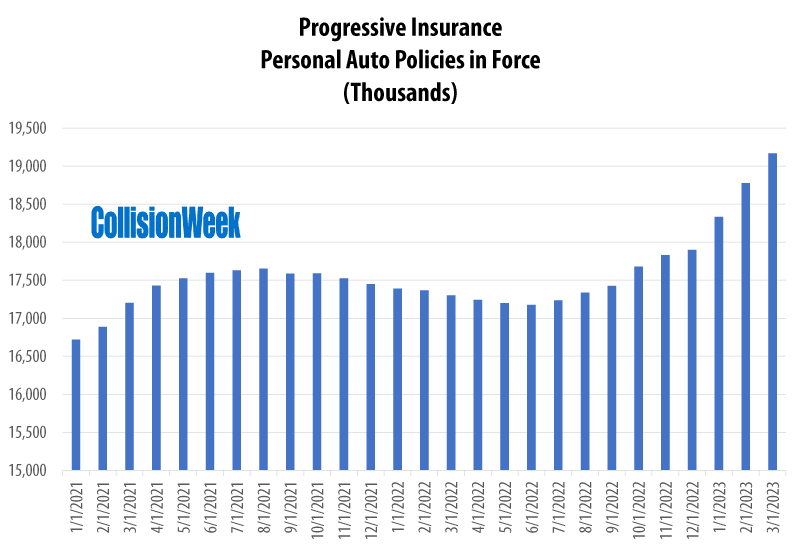
Progressive Reports Personal Auto Policies in Force Up Over 15% in September Compared to Last Year
Auto policies in force set another new record. Combined ration up year over year.
The Progressive Corporation (NYSE: PGR) reported its total personal auto insurance policies in force were 26,299,000 in September, an increase of 3,445,600 or 15.1% from 22,803,500 in September 2024. The September total personal auto policies in force set another new record for the company, continuing a streak that began in early 2024.
Policies in Force
The latest increase, at 15.1% higher than September 2024, is below the recent peak 21.9% increase in March and 20.9% increase in April, and the 19.7% increase in May and 19.2% in June, 17.7% increase in July and 16.5% increase in August versus the same month the previous year. The comparison versus the previous year had been above 21% from November 2024 through March.
Percentage Change in Policies in Force
Agency personal auto insurance policies were 10,630,000, up 13% from 9,415,000 in September 2024. Direct policies in force were 15,619,000, up 17% from 13,388,000 a year earlier.
Net written premiums for September for all insurance types reached $7.128 billion, up 10% from $6.57 billion in September 2024. Net premiums earned in September were $6.827 billion, reflecting a 14% increase from $6.263 billion in the same period last year. MORE

W. R. Berkley Corporation Reports Third Quarter 2025 Results
W. R. Berkley Corporation (NYSE: WRB) today reported its third quarter 2025 results
Third quarter highlights included:
- Return on equity of 24.3% and operating return on equity of 21.0%.
- Net income grew 39.8% to $511.0 million.
- Average rate increases excluding workers' compensation were approximately 7.6%.
- Gross and net premiums written grew to $3.8 billion and $3.2 billion, respectively.
- The current accident year combined ratio before catastrophe losses of 2.5 loss ratio points was 88.4%.
- The reported combined ratio was 90.9%, including current accident year catastrophe losses of $78.5 million.
- Net investment income of $351.2 million driven by core portfolio increase of 9.4%.
- Book value per share grew 5.8%, before dividends and share repurchases.
- Record common stockholders' equity of $9.8 billion.
Management commented:
The Company delivered strong third quarter results highlighted by a 24.3% return on beginning of year shareholders' equity, reflecting continued strength in both underwriting and investment income. Book value per share increased 5.8%, before dividends and share repurchases.
Our decentralized structure and focus on specialty niche markets continue to differentiate us, enabling growth while maintaining rate adequacy and underwriting discipline. This approach resulted in another strong quarterly combined ratio of 90.9%.
Announcements
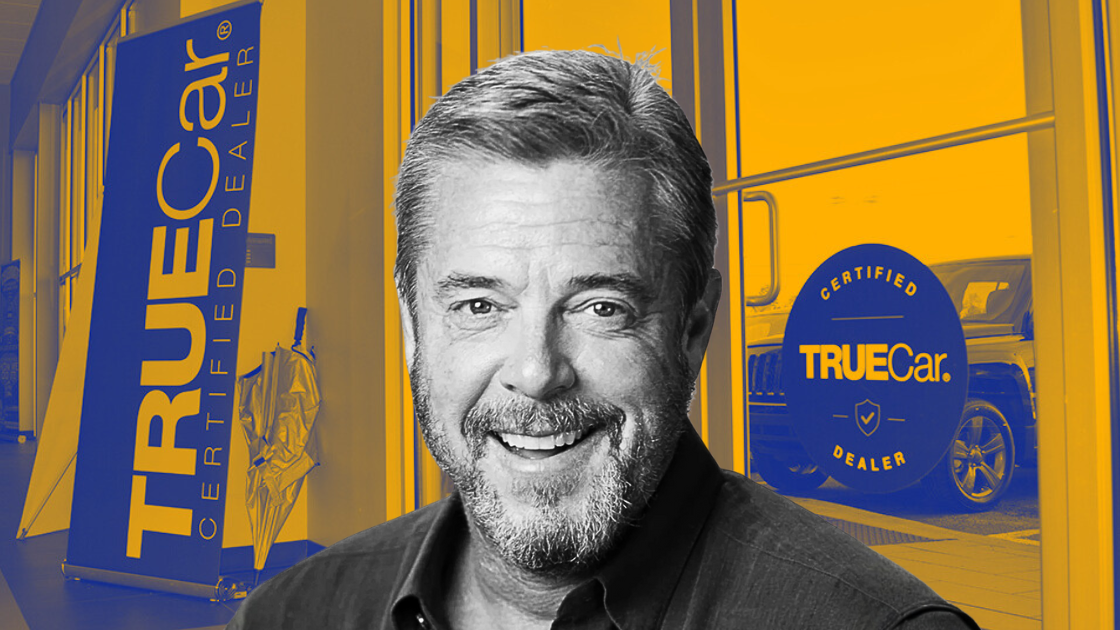
TrueCar reboot: Founder Scott Painter returns with $227 million private buyout
Completion of this transaction is subject to approval by TrueCar stockholders, and gaining the appropriate regulatory approvals.
TrueCar $TRUE ( ▲ 1.66% ) announced Wednesday that it has reached an agreement to be acquired by the online car brand's founder, Scott Painter, in a $227 million go-private deal that marks his return a decade after stepping down.
The details: Under the proposal, Fair Holdings, led by Painter, will acquire TrueCar in an all-cash transaction valued at $2.55 per share, a move that will bring together a diverse group of industry veterans and institutions, collectively known as the “Syndicate,” to lead TrueCar’s next chapter.
The bulk of the financing (~$164 million) comes from Alpha Auto, an affiliate of Miami Lakes Automall, a multi-franchise dealer operator. And an additional $60 million is expected from the broader Syndicate.
With a major focus on transparency and trust, the Syndicate will combine expertise across dealer operations, data, fintech, and mobility experiences.
Expected to close in late 2025 or early 2026, the transaction includes a standard 30-day “go-shop” period that expires November 13, 2025.
Once the deal is completed, Painter, who stepped down from TrueCar in 2015, will assume the role of the company’s chief executive officer.
